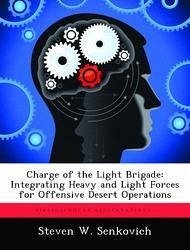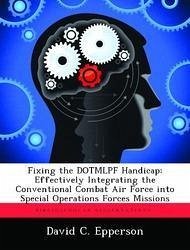
Charge of the Light Brigade: Integrating Heavy and Light Forces for Offensive Desert Operations
Versandkostenfrei!
Versandfertig in über 4 Wochen
54,99 €
inkl. MwSt.

PAYBACK Punkte
27 °P sammeln!
This monograph examines the feasibility of cross-attaching heavy and light forces for the conduct of offensive desert operations. Cross-attaching heavy and light forces is not a new concept, but current U.S. Army doctrine in this area is shallow. Furthermore, most current discussion and studies concerning heavy-light operations are centered around a Central European defensive scenario. The purpose of this monograph is to examine the employment of heavy-light forces in a more probable context; the volatile Middle East/Southwest Asian region. To better understand what makes the desert a unique b...
This monograph examines the feasibility of cross-attaching heavy and light forces for the conduct of offensive desert operations. Cross-attaching heavy and light forces is not a new concept, but current U.S. Army doctrine in this area is shallow. Furthermore, most current discussion and studies concerning heavy-light operations are centered around a Central European defensive scenario. The purpose of this monograph is to examine the employment of heavy-light forces in a more probable context; the volatile Middle East/Southwest Asian region. To better understand what makes the desert a unique battlefield, the monograph first surveys the geography of the desert to illustrate its complex nature. Its military characteristics are examined to determine just how its varied terrain influences the suitability of each type force for desert warfare. Since the U.S. Army's desert warfare experience is relatively limited, it is more useful to examine, from a historical perspective, the experience of armies with an extensive background in desert operations. Accordingly, the experience of the British Eighth Army in North Africa during WWII and the Israelis during their two most recent conflicts is analyzed. The focus is specifically on how they employed heavy and light forces offensively, and what doctrinal implications their experience has for the U.S. Army. Before examining current U.S. Army heavy-light doctrine, the monograph examines the capabilities and limitations of our heavy and light forces in the context of a desert environment. Next, considerations and special concerns for cross-attaching heavy and light forces are discussed, to include the difficulties in synchronizing these types of operations. Finally, the salient lessons learned from the National Training Center over the course of nine heavy-light rotations are highlighted with respect to the battlefield operating systems. The monograph concludes that a heavy-light mix for offensive desert operations is a viable con














